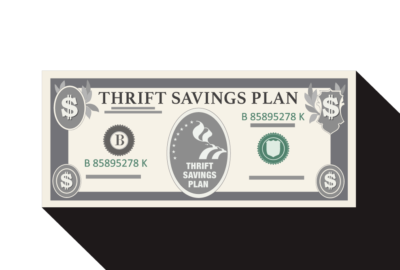
Are you over-investing in the TSP?
When it comes to employer-backed 401k plans, most experts say that the federal Thrift Savings Plan, with its 5% match and super-low administrative fees, is the best...
When it comes to employer-backed 401k plans, most experts say that the federal Thrift Savings Plan, with its 5% match and super-low administrative fees, is the best deal around. At the end of March, the TSP had 5.6 million participants and was worth $561 billion. Arthur Stein, a Washington area financial planner, spent a day on Capitol Hill last month talking to Senate staffers about their investment options. Most of them were in the TSP, but in some cases, he said they should be investing less. Why? Here’s what he said:
“Last month I spent a day on Capitol Hill providing pro bono advice to Senate employees. Many of them where investing as much as they could in the TSP. In some cases, I suggested that they invest less.
Why would I do that?
Well, investing the maximum possible in the TSP is a commendable achievement but many of these employees had significant debt and/or inadequate amounts of emergency funds and insurance (life, disability, long-term care, auto, homeowners and umbrella liability).
It does not make sense to build up TSP investments if those investments are not being protected by emergency funds and insurance. An illness or accident resulting in disability or death could wipe out investments accumulated over decades. If there is another furlough, it could continue for a longer period of time than the last. Someone paying 18% or more on credit card debt might find it more cost effective to pay down the debt by reducing their bi-weekly TSP investments.
Employees should invest at least 5% in the TSP; that is the percentage needed to obtain the maximum available matching funds. Beyond that, Employees need to balance long-term investment needs against other needs.
As a result, some Federal Employees may be in a situation where it makes sense to reduce their TSP contributions (but not below 5%). The funds that would have been contributed to the TSP could then be used for other financial needs: paying off credit card debt, building an emergency fund, purchasing additional life insurance to protect a non-working spouse and children, increasing auto and homeowner liability coverage, etc.
Example: A few years ago, I met a Federal Employee who was making the largest possible TSP contribution. That might have been great if he had no dependents but he did; three young children and a spouse who was a more than a full time homemaker and mom and did not work outside the home.
In spite of that, his FEGLI life insurance coverage was only three times his pay. If he died, the life insurance benefit might support his family for three or four years. After that, if his wife did not go back to work, his TSP balance was the only available source of funds. It might last four years. If his wife were able to find work, she would still have to withdraw funds from the TSP to pay for the cost of childcare and any difference between her salary and benefits and his. That difference could be a lot since she had been out of the workforce for eight years.
One possible solution: Reduce TSP contributions and use the funds to purchase additional life insurance. Not because he wants to buy life insurance (no one does) but because he needs the extra insurance to protect his family.
This is not a recommendation! It is a financial planning issue. It will make sense for some but not others. Consult with your financial planner to help you decide the best strategies.
Mike and I will be discussing this and other issues today at 10 a.m. EDT on the Your Turn show here on federalnewsnetwork.com or 1500 AM. Please email him any questions you would like to hear discussed. His email is mcausey@federalnewsnetwork.com.
Note: Individual situations vary; therefore, this information should not be relied upon as individual advice relevant to any person. This material is meant for illustration and/or informational purposes only and it is not to be construed as tax, legal, financial or investment advice. For information on your specific situation, consult a professional.” –Arthur Stein
Nearly Useless Factoid
By Alazar Moges
There are four kings in a standard deck of cards. A Spade. A Club. A Diamond. A Heart. They all look pretty similar. There is however a little hairy detail you probably never noticed. Of the four, only one does not have a mustache, the King of Hearts. He did have one originally, but during reproduction of the original design, it was removed.
Source: The Guardian
Copyright © 2025 Federal News Network. All rights reserved. This website is not intended for users located within the European Economic Area.
Mike Causey is senior correspondent for Federal News Network and writes his daily Federal Report column on federal employees’ pay, benefits and retirement.
Follow @mcauseyWFED





